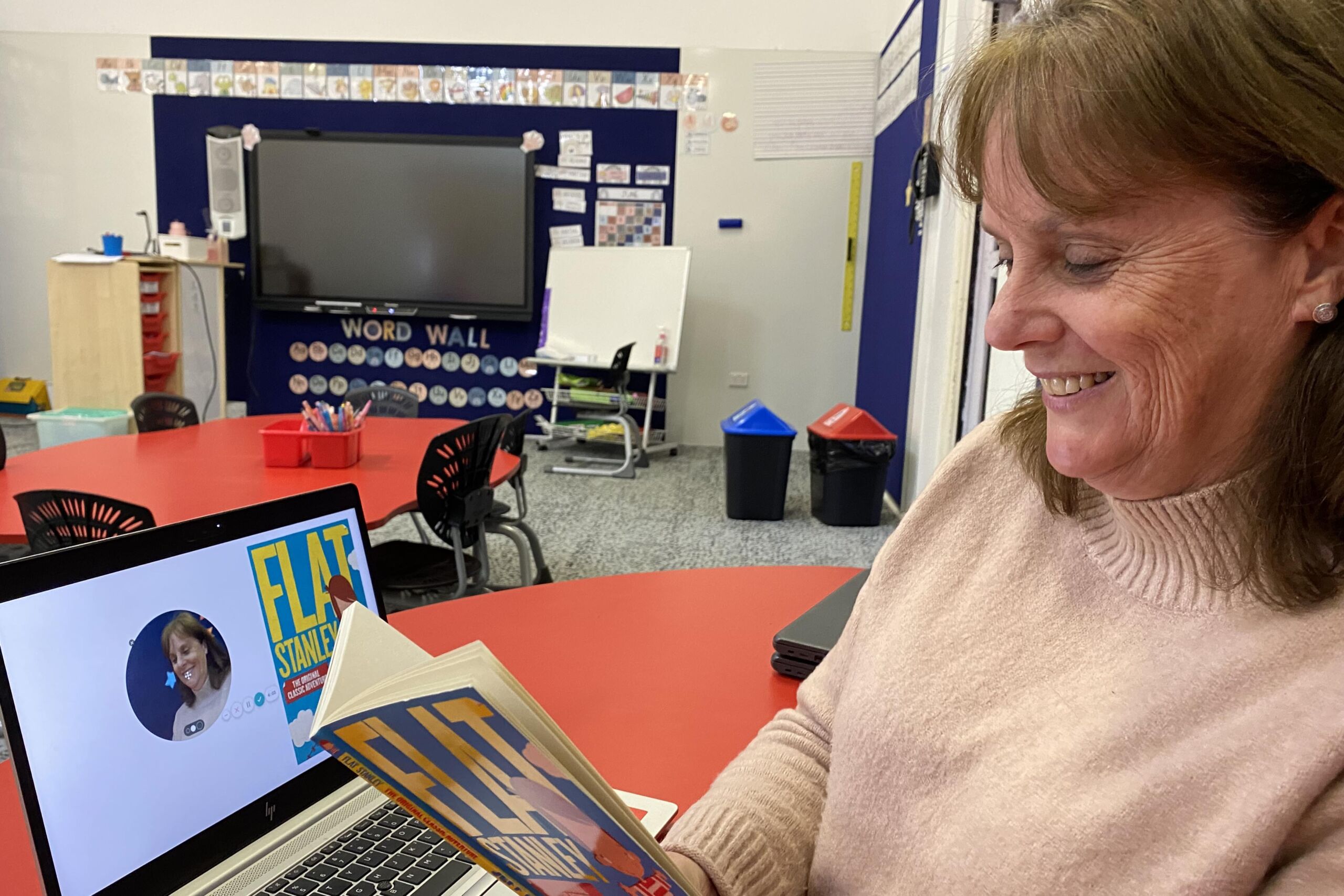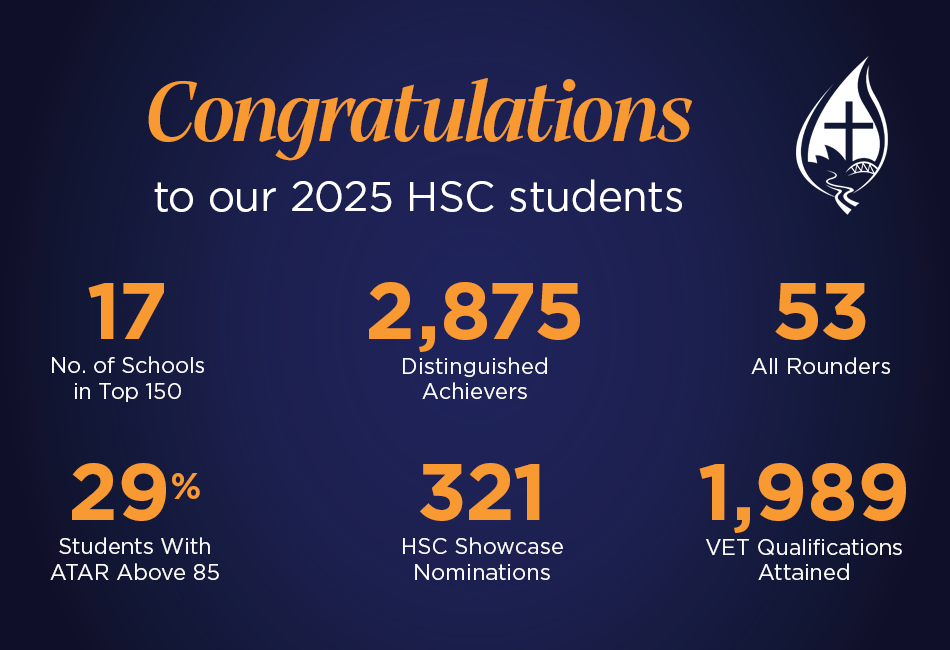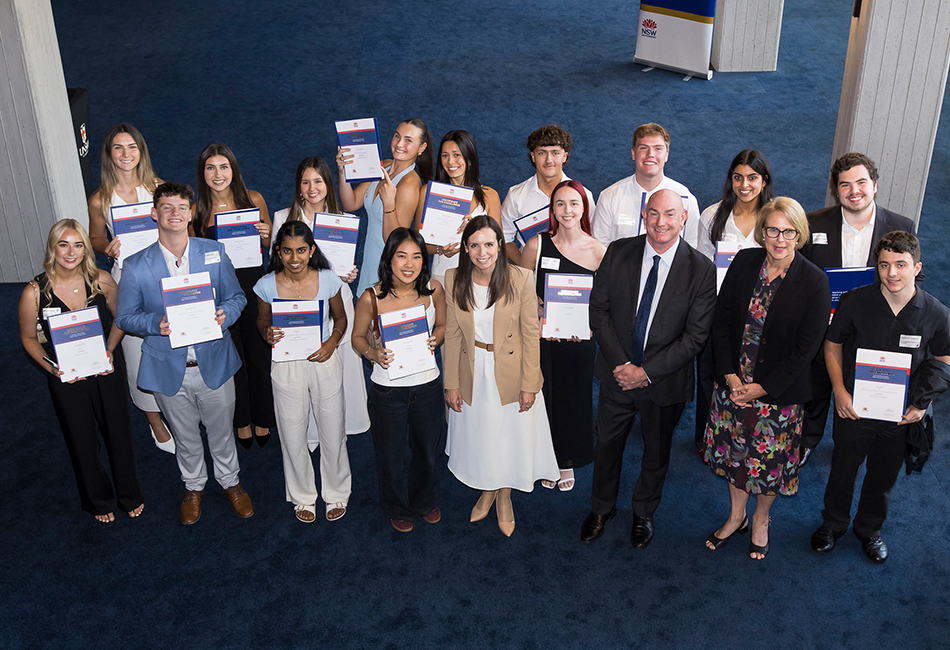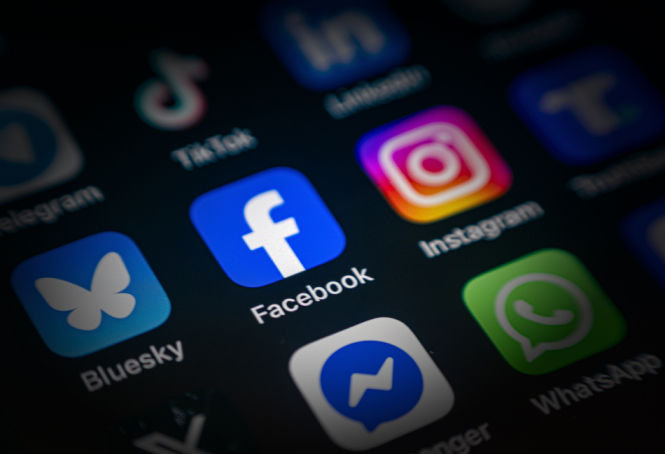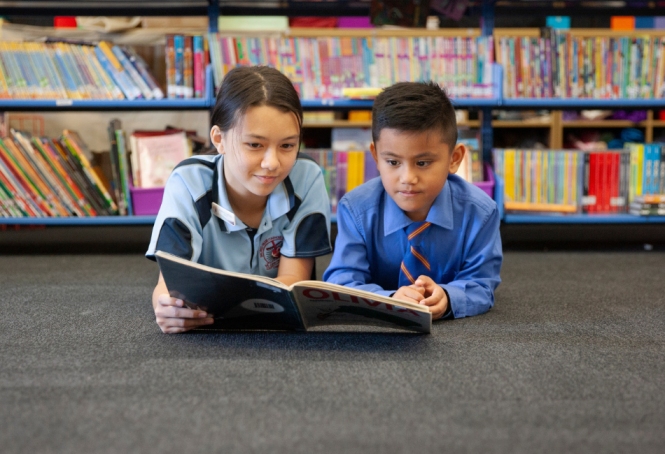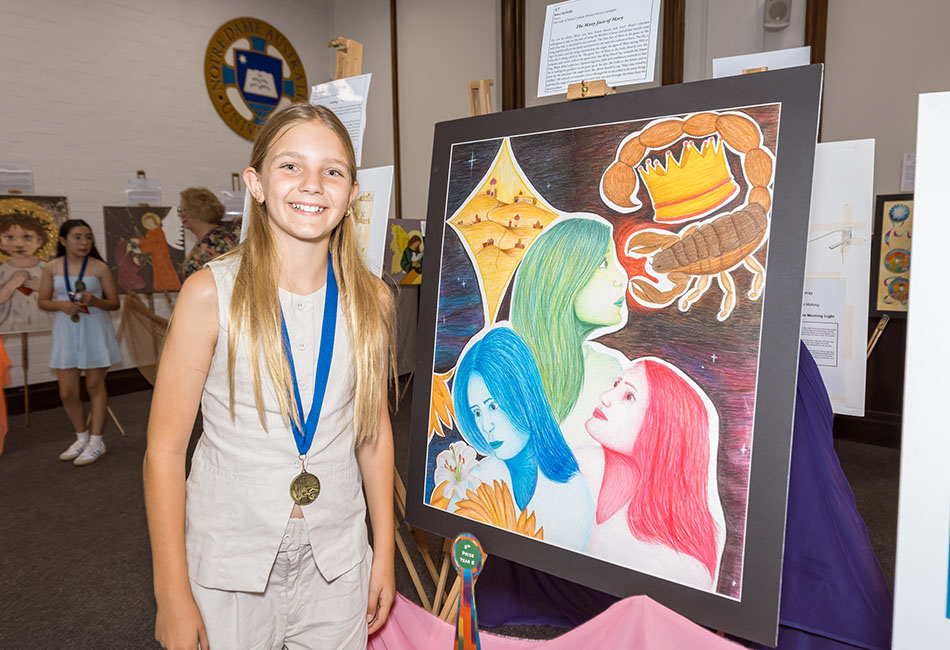Kindergarten students are taking remote learning in their stride, just months after starting their ‘big school’ adventure at Sydney Catholic primary schools. Year 1 students are used to learning online for a while – and are building their independence every day.
Video lessons are a touchstone of students’ day, giving them a chance to grow into independent learners.
They also give families flexibility to complete the 2.5 hours of remote learning a day that the Department of Education has set while COVID-19 pandemic restrictions are in place.
‘STICK TO A DAILY ROUTINE’
Kindergarten students at St Joseph’s Catholic Primary School Rockdale see an enthusiastic video message from their teacher, Romana Lovric, each morning.
It is one part of a daily routine designed to give students consistency.
“Transitioning to home learning with Kindergarten has been both extremely rewarding and challenging at times” – Romana Lovric
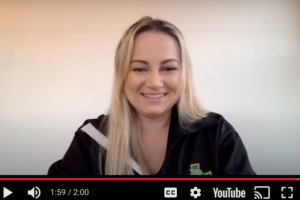 “When planning remote lessons, I stick to a daily routine so both students and parents know what to expect,” Ms Lovric said.
“When planning remote lessons, I stick to a daily routine so both students and parents know what to expect,” Ms Lovric said.
“Remaining connected with students and their families and their wellbeing has also been a strong focus for me.
“Each day includes some mindfulness activities, or opportunities to connect with nature in their home setting.”
St Joseph’s Assistant Principal Kylie O’Donnell said activities geared to the home environment have allowed students to explore the world around them “developing resilience, communication and mindfulness.”
LEARNING INDEPENDENCE
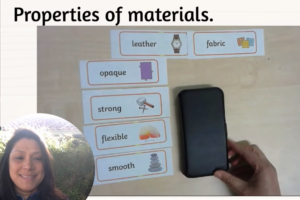 Kindergarten and Year 1 teachers can count on the curiosity of their students.
Kindergarten and Year 1 teachers can count on the curiosity of their students.
Designing remote lessons has made them mindful of other traits young learners share.
“They take what we say quite literally,’ said Year 1 teacher at St Michael’s Catholic Primary School Daceyville, Chris Lawrence.
“There are so many skills the children are learning” – Chris Lawrence
A PDF with links to the day’s video lessons and activities is sent by 5pm the night before so families can be organised.
“They can access the learning at any time in the day,” Mrs Lawrence said.
“Some families might start work at 9am, so they might work with the kids for two hours before they even start work.”
“For every single activity there is a video of one of the teachers explaining what to do and how to do it” – Mrs Lawrence
“The children need to actually watch the video and try to be a bit more independent,” Mrs Lawrence said.
She and her colleagues survey their students at the end of each week, asking them to nominate what activities they enjoyed, what they found hard and what helped them.
“It’s also getting them to think ‘I found that hard, but what did I do to try and solve the problem?’, because it is about independence.”
‘IT’S OKAY, DO WHAT YOU CAN’
Zoom is not used for young learners for a handful of reasons, including the extra steps needed to get to content, plus they are not recorded for safety reasons.
“If children miss out on a Zoom where we’ve taught content they can’t re-watch it, because we can’t record it,” Mrs Lawrence explained.
“Instead we pre-record lessons on Loom and Screencastify to teach content and explain the tasks. These are shared with the students in their day plans so they can access the teaching whenever they can.
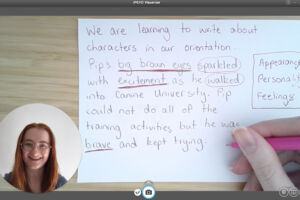 “We ask the children to take a photo of their work or send a video to us on Seesaw.
“We ask the children to take a photo of their work or send a video to us on Seesaw.
“The three Year 1 teachers will spend time every day responding to the activities kids have posted; give feedback and mark their work, so that we are engaging with them. Parents can also ask questions through the app.”
Mrs Lawrence said the weekly phone call check-in with families was very beneficial “just to let them know ‘It’s okay, do what you can’.”
“Wellbeing at this point in time is so important,” Mrs Lawrence said.
“Our students have the opportunity to connect via Google Meet throughout the week for their social wellbeing.”
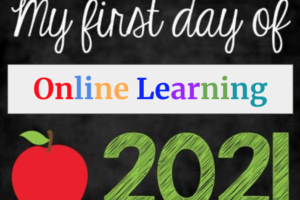
HOME LEARNING AT A GLANCE
- 2.5 hours of learning a day
- English and Mathematics tasks daily
- Religious Education three times per week
- Science, Geography, Creative Arts, PDHPE and wellbeing activities relate to the home environment
- New and difficult concepts rescheduled for when in-class learning resumes
- Digital skills in focus
- Google Classroom, SeeSaw, Loom, Screencastify and other apps used to deliver lessons and track student progress
- Students encouraged to spend time outside and away from their screens

